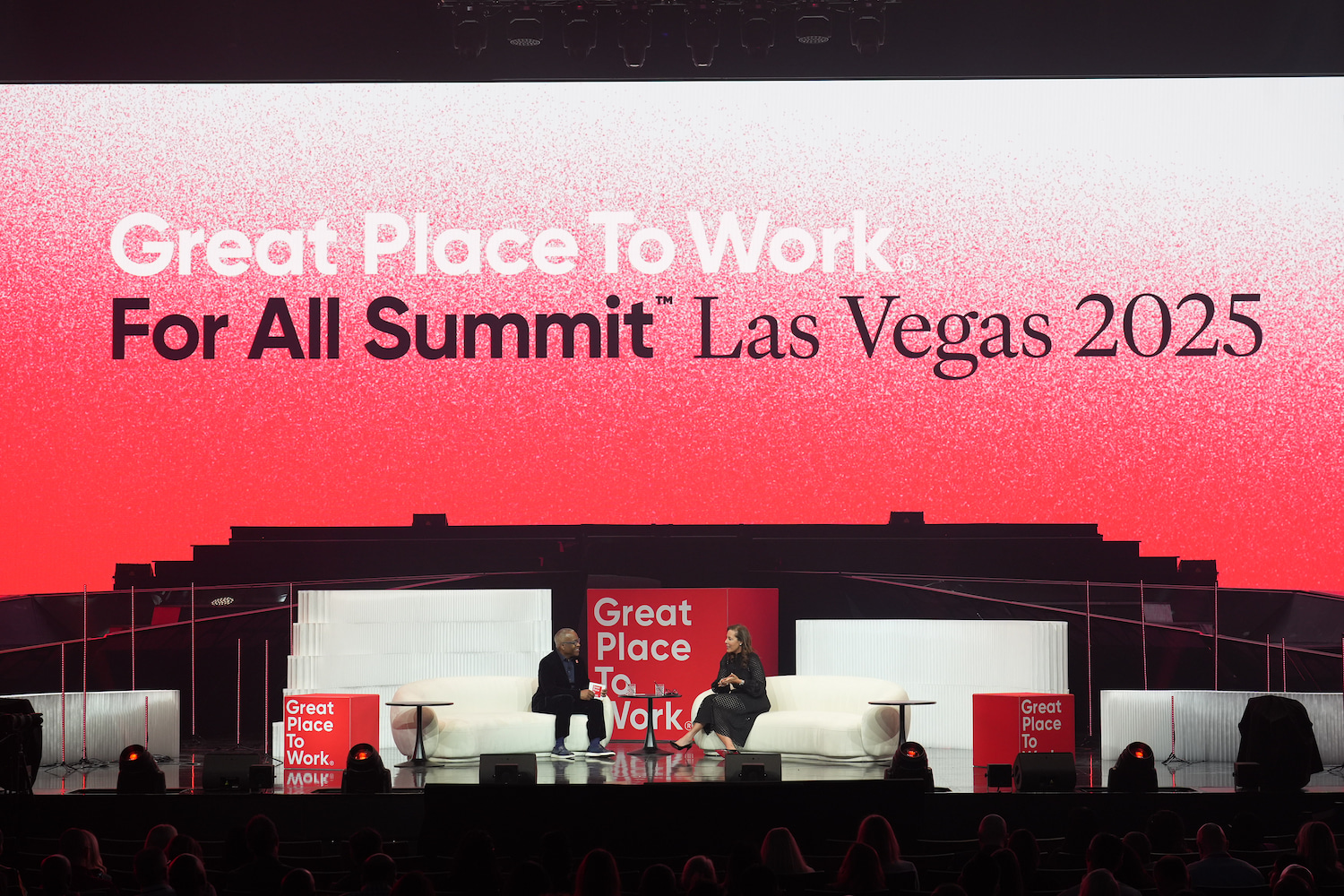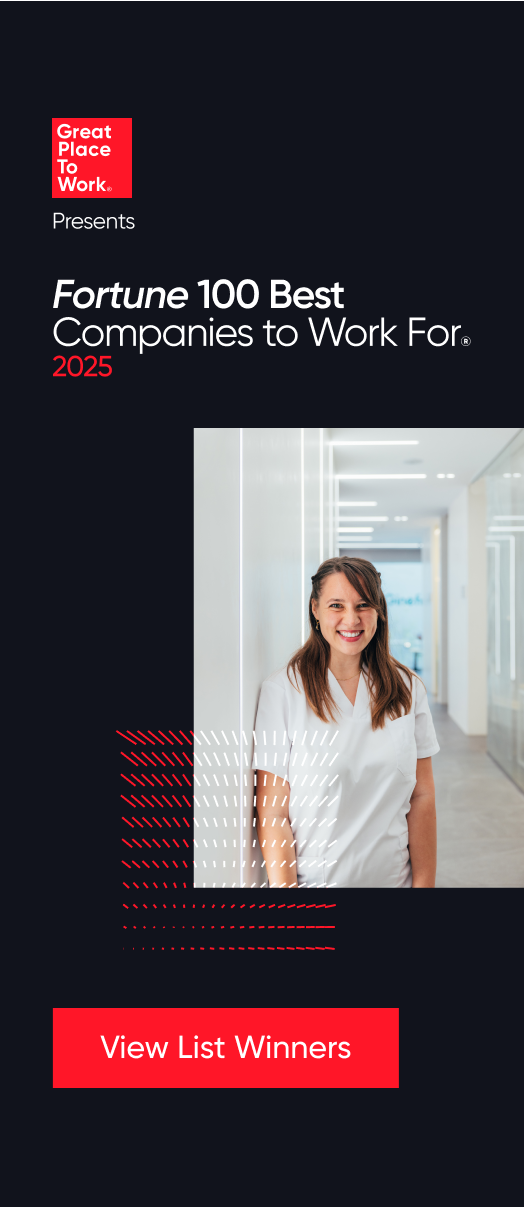Benefits, Employee Well-being, Listening
You don’t need a massive budget to ensure your workers are on the path to greater well-being.
It’s a myth that small and medium-sized companies can’t offer the same employee well-being as larger organizations.
Even with a one-person HR staff, there are crucial steps you can take to separate yourself from the typical workplace. In a 2023 market study of 4,400 U.S. employees, Great Place To Work® found that the typical workplace hasn’t improved much on measures of psychological and emotional health since 2021.
Attend our annual company culture conference May 7-9, 2024
That’s a finding that cuts against the trend of companies investing in well-being resources in the wake of the pandemic.
What does move the needle? Having a high-trust workplace culture.
At Great Place To Work Certified™ companies, 84% of employees report having a healthy work-life balance in 2023, compared to 63% at typical U.S. workplaces.
Similarly, 84% of employees at Certified companies say they have a psychologically and emotionally healthy work environment. In 2023, only 55% of employees at typical workplaces said the same.
How any company can boost well-being
Flashy benefits aren’t the way to improve employee well-being for any company, particularly smaller firms with limited resources. Instead, focus on programs that broadly support basic needs, and are flexible to fit individual preferences.
Your first priority should be your PTO policy, says Elizabeth Buchanan, CCO and member of the founding team at Rokt, No. 9 on the Fortune Best Workplaces in Advertising and Marketing™ in 2023.
“How do you ensure people do take a break?” she says.
When looking at benefits, she recommends finding programs that employees can adapt or pursue on their terms, such as mental health coaching that can be used once a month on an employees’ schedule.
What unlocks those benefits? Turn managers into partners who can coach and support employees with the resources available.
“Benefits level up when you can use them as you choose in combination with your manager’s partnership and feedback on what might be helpful,” Buchanan says.
Crucially, companies should address issues of fairness, transparency, and trust.
“How do you make sure everybody is treated equally, fairly, and transparently?” Buchanan says. “One of the things we care a lot about is transparency for equality of opportunity.”
For Rokt, that means having a transparent career ladder for every role. Employees can see the necessary skills for each role and the salary and stocks/equity associated with each position. Employees in the same role receive identical compensation regardless of their gender, race, or negotiation skills.
By focusing on PTO, manager support, and transparency, companies can create more well-being for employees without leveraging the big budgets of global firms.
Listening with surveys
The most valuable tool for improving employee well-being is a regular employee survey, Buchanan adds.
At Rokt, quarterly pulse surveys are used to understand how employees feel about their workplace experience.
Beyond digging into the specifics of different survey responses, your overall participation rate is a clear indicator of organizational health. At Rokt, participation rates usually hit 95% — a number Buchanan watches very closely.
“I want to hear from everybody,” she says, “not just those who are the active voices, who are probably in the affinity groups. I want to hear from everyone how they are feeling about our performance.”
What drives Rokt’s superb participation rate? “Actually do things as a result of the survey,” Buchanan says.
That means sharing out survey results in an all-company meeting and being transparent about the good and the bad.
“We share it, and we say, ‘We acknowledge that we haven't delivered here and this is what we’re going to do,’ or ‘Thank you for celebrating that,’” Buchanan shares.
Taking benefits from ‘good’ to ‘great’
Every company wants to offer competitive and superlative benefits. However, it’s the experience of the benefits that can drive such different outcomes from employee well-being.
That’s why companies like Rokt are hyper-focused on ensuring benefits get used.
When leaders saw that unlimited PTO was leading to fewer employees actually taking time off, they created a different strategy.
Rather than offering unlimited PTO, employees are encouraged to take their full leave each year. Rokt awards employees who take most of their leave for the year an additional five days of PTO, what it calls “High Five Days.”
“We’re in a high-performance fast growth industry, but we also know that ultimately the most important thing is to have balance and take your proper leave with your loved ones, or whatever it is you want to do,” Buchanan says.
Rokt’s efforts to ensure employees feel supported in taking time away from work don’t stop there. They also close the office for the holidays each year and offer programs like a sabbatical for employees with at least five years of service, which can last up to 12 weeks.
Leaders are expected to model using these programs, and Rokt’s CEO took a sabbatical last year.
“He took a full 12 weeks off and was completely uncontactable, not involved in the business,” Buchanan says. She and another company officer who runs product and engineering took over for those weeks as co-CEOs, setting a powerful example for all staff.
“Setting that example — ‘Even the boss takes proper leave’ — has been really important for us,” Buchanan says.
Get more insights
Learn more strategies from our workplace culture experts at our For All™ Summit, April 8-10, 2025 in Las Vegas, NV.











